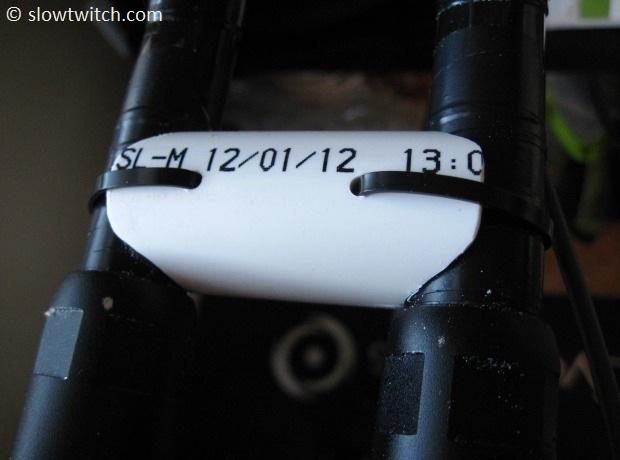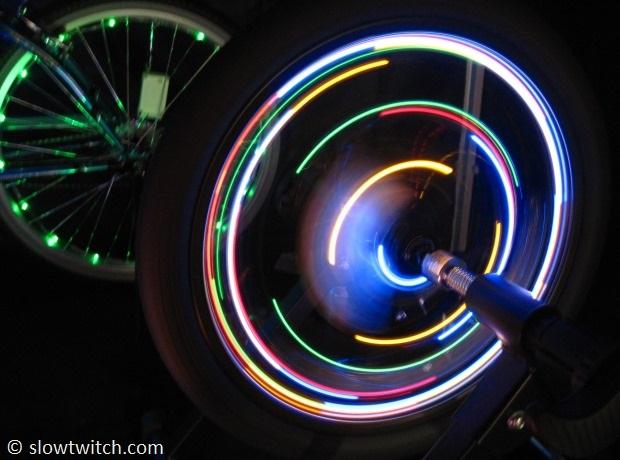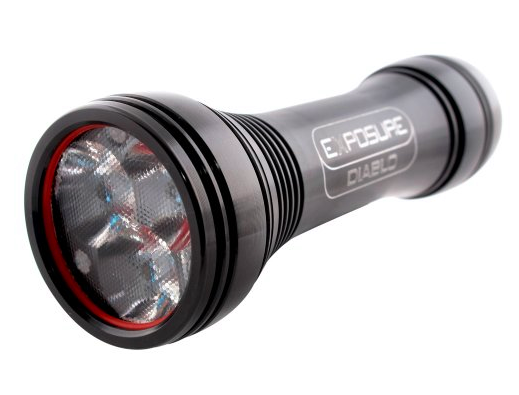Serfas TSL-550 & Thunderbolt
For those not familiar with Serfas, they offer a wide variety of products including saddles, tires, cycling shoes, pumps, accessories, and today’s topic – lights. We previewed a few of their lights in our Interbike 2013 coverage, and will cover two models in greater detail today – the TSL-550 headlight and multi-purpose Thunderbolt.
Here is a look at what showed up at my doorstep:

From left-to-right (above): Thunderbolt red tail light, TSL-550 headlight, and Thunderbolt black headlight.
TSL-550 – $140
The TSL-550 is the second-brightest headlight from Serfas that is self-contained (e.g. the battery is held internally). Here is a look at what you get in the package:

The TSL-550 offers a max output of 550 lumens for two hours via a single Cree LED. You can also choose 330 lumens for 3:40, 230 lumens for 4:40, 120 lumens for 9:30, or flashing mode for 7 hours. The on/off button doubles as a battery indicator, and will change from blue to red when you have 20% left.
The key competitors in the Serfas line are the top-end TSL-750 ($160) and the TSL-350 ($120). They can hold their maximum lumen output for 1:30 and 3:30, respectively.
All of these lights include a clip-in helmet mount and handlebar mount:

If you’re new to lights, you may be wondering what a ‘lumen’ is. In very simple terms, it is a way of telling you how bright a light is to the human eye. There are other units of measure out there (e.g. candlepower and lux), but lumens are the generally-agreed-upon standard in the bicycle industry.
Serfas has their own unique system that they call ‘True’ lumen technology. According their literature and product videos, they do their own testing in-house to guarantee that their lights have at least the stated number of lumens (insert fancy test photo here):

Lumens can be tricky. Not only does total output matter, but also the spread of the beam. I have used a lot of lights in my day, and have seen some pretty wide variation in what appears to be ‘effective brightness’ due to beam spread. While subjective, my take is that the TSL-550 is a solid or ‘real’ 550 lumens.
The beam spread itself is focused fairly narrow, making the light seem very bright in its focused area. It is very definitely a light that you can use to see rather than only to be seen. The only negative aspect of the light that I found was not the lamp itself, but rather the design of the housing around it. There is a shroud that juts out around the lens, which can inhibit some visibility from the side (e.g. light that helps to ‘to be seen’):

The positive aspect of this design is it makes the glass less likely to be damaged in the event of a crash.
The TSL-550 houses its batter internally. Note the small o-ring seal at the base of the battery:

The instructions for the TSL-550 recommend that you use a small amount of grease on the battery’s o-ring to aid with smooth installation and promote weather sealing. I’m generally a fan of doing this on any piece of bicycle electronic equipment that has a removable battery, or any sort of opening that could let water in.
For these applications, I use silicone-based grease, also called dielectric grease.
![]()
Indeed, without any grease, I was not able to fully close the battery. The closure system requires that you use a coin (e.g. a US quarter) to turn it. With a small amount of grease, everything was silky-smooth:

The TSL-550 includes a USB charger, which plugs in to the bottom of the light. This can be plugged directly into your computer’s USB port, or into the supplied US wall outlet adapter. Serfas quotes a 4 hour charge time for the wall charger.

While the TSL-550 can be used on a helmet or handlebar, I personally chose to use it on the bar. I like helmet lights for a variety of conditions, but found that the 550 was on the heavy side to act as a helmet light. It clocked in at 198 grams, or 90 grams heavier than my Exposure Diablo (which is, admittedly, over double the price).

Because of that weight, I was concerned that the light might be awkward or bounce around on the bar. Thankfully, Serfas provides a sturdy strap-style mount that can fit up-to-31.8mm bars:

While I could tell it was heavier than some of my other lights, it never ejected from the mount on rough pavement, and never got tilted out-of-place.
Overall, the TSL-550 is a lot of light for the price ($140). I used it both for daytime riding, and also a few rides that ended in darkness due to the impending winter. It is very bright, especially given the reasonable price. While I wish it was a few grams lighter, you can’t have it all.
Like most lights today, the 550 does not have any specific accommodations for use with aerobars. Your best bet is to make your own PVC mount, which we detail in the article linked at the bottom of this page (Aerobar Accessory How-To). You can mount the light upside-down between your aerobar extensions.
Thunderbolt – $45
Next up we have the mini Serfas Thunderbolt. It is available as either a head light (white bulb) or tail light (red bulb). Either version is available in many different colors for the surrounding rubber housing; this is my black headlight:

There are a few differences between the headlight and tail light versions:
Headlight
-15 double strength LEDs
-90 lumens max output
-Modes: 1.5 hours (high beam); 6.5 hours (low beam); 3.5 hours (high blink); 9 hours (low blink)
-50 grams
Taillight
-30 Micro LEDs
-35 lumens max output
-Modes: 1.75 hours (high beam); 7 hours (low beam); 3 hours (high blink); 9.5 hours (low blink)
-50 grams
Each Thunderbolt includes a USB charging plug for your computer. Note that the cable is different than the TSL-550 – the two are not cross-compatible. One is ‘Micro USB’ and the other is ‘Mini USB’. Yes, those two are different, and yes, I had to look it up on the internet.

You can plug your Thunderbolt into a wall outlet if you have a spare USB converter (e.g. from your high-tech phone or other similar device).
To turn on the Thunderbolt, simply push the button on its side:

The beauty of the Thunderbolt is that it can mount just about anywhere. The head light version comes with long straps, and the tail light comes with short straps:

Personally, I’d love to see them include both sets of straps with every light – or only the long size (so the user can cut-to-fit). With some of the deep aero seatposts on the market today, there is a good chance that the long straps will be necessary. I would also like to see more rungs on each strap to dial the fit in more precisely.
The thing that I found interesting is that it almost seems like the Thunderbolt head light was made for triathlon bikes. It is much wider than most headlights and requires quite a lot of free real estate on your handlebar – which is often not available on a road bike (due to cable routing, bar tape, other electronic devices, etc). Most base bars have a lot of room to spare:

For this reason, I think the Thunderbolt is a perfect solution for race day. How many of you have ridden from your car to the transition area… in the dark… without a light. Two thunderbolts would give you 180 lumens, and can be removed very easily for the actual race.
The tail light version isn’t limited to seatpost mounting. Increase your side visibility by putting them on your bike’s seat stays:

Just how bright is the Thunderbolt? This is one place where beam concentration and spread really make lumen rating seem a little bit shaky. Simply put, the Thunderbolt seems MUCH brighter than the lumen rating would suggest. The ‘beam’ is super concentrated and attracts your eye.

To be clear, the Thunderbolt does not project a whole lot of light on to the road. It is a light to be seen, rather than to see. Two Thunderbolts on your handlebar would definitely light up the road in front of you a fair amount (e.g. race morning), but their primary function is to be visible to oncoming vehicles.
If I had my own star rating system, I’d give the Thunderbolt a 4.5 out of 5. If they could revise the straps slightly as discussed above, it would be a 5 out of 5. The price is very competitive, they’re very bright, and most importantly – they’re very easy to install and swap between bikes. The main hurdle with light usage on triathlon bikes is a lack of mounting options, and the Thunderbolt is about as easy as it gets.








Start the discussion at forum.slowtwitch.com